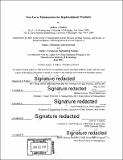| dc.contributor.advisor | Stephen Graves and David Simchi-Levi. | en_US |
| dc.contributor.author | Gabris, Andrew J | en_US |
| dc.contributor.other | Leaders for Global Operations Program. | en_US |
| dc.date.accessioned | 2016-09-27T15:15:16Z | |
| dc.date.available | 2016-09-27T15:15:16Z | |
| dc.date.copyright | 2016 | en_US |
| dc.date.issued | 2016 | en_US |
| dc.identifier.uri | http://hdl.handle.net/1721.1/104400 | |
| dc.description | Thesis: M.B.A., Massachusetts Institute of Technology, Sloan School of Management, 2016. In conjunction with the Leaders for Global Operations Program at MIT. | en_US |
| dc.description | Thesis: S.M. in Engineering Systems, Massachusetts Institute of Technology, School of Engineering, Institute for Data, Systems, and Society, 2016. In conjunction with the Leaders for Global Operations Program at MIT. | en_US |
| dc.description | Cataloged from PDF version of thesis. | en_US |
| dc.description | Includes bibliographical references (pages 55-56). | en_US |
| dc.description.abstract | Nike replenishment products (make to stock) are forecasted and planned at a style/color level and then disaggregated to a size level forecast through the use of a size curve. This method of forecasting and planning provides many advantages such as reduced effort expended on forecasting and the ability to quickly roll up data for capacity planning. Size curves are based on historical proportions of sales. For instance, if size small sells 10% of the volume for a given style/color, the size curve would be set to 10% for small. Not surprisingly, the size curve for a given style/color sums to 100%. In a manner similar to the forecast, size curves are used to disaggregate style/color safety stock quantities that are used to ensure target service levels (item fill rates) are met. However, this disaggregation results in lower-than-anticipated service levels for the size-level stock-keeping units (sku's), since the style/color safety stock does not account for the increased forecast error at the size level. Additional challenges occur from the fact that the relative magnitude of the forecast error is inversely proportional to the demand level. As a consequence, fringe sizes, which account for lower volumes of sales, account for a disproportionate amount of variability within a style/color affecting service levels. To resolve these observations, the project first attempted to improve the quality of the size curves by applying different statistical forecasting techniques in their formulation. We found that the status quo forecasting methodology was as good as or better than other methods, which suggests that there is a limit to the accuracy of size curves. In order to increase service levels across all sizes, several recommendations have been made. First, by reducing the number of size offerings from the replenishment products, many of the more challenging sizes will be eliminated. Next, this additional size level error can be accounted by right-sizing safety stock. Finally, a manual update process for size curves is employed that leaves many facets of the process to individual planners. Standardization of the size curve process will support more consistent results. | en_US |
| dc.description.statementofresponsibility | by Andrew J. Gabris. | en_US |
| dc.format.extent | 63 pages | en_US |
| dc.language.iso | eng | en_US |
| dc.publisher | Massachusetts Institute of Technology | en_US |
| dc.rights | M.I.T. theses are protected by copyright. They may be viewed from this source for any purpose, but reproduction or distribution in any format is prohibited without written permission. See provided URL for inquiries about permission. | en_US |
| dc.rights.uri | http://dspace.mit.edu/handle/1721.1/7582 | en_US |
| dc.subject | Sloan School of Management. | en_US |
| dc.subject | Institute for Data, Systems, and Society. | en_US |
| dc.subject | Engineering Systems Division. | en_US |
| dc.subject | Leaders for Global Operations Program. | en_US |
| dc.title | Size curve optimization for replenishment products | en_US |
| dc.type | Thesis | en_US |
| dc.description.degree | M.B.A. | en_US |
| dc.description.degree | S.M. in Engineering Systems | en_US |
| dc.contributor.department | Leaders for Global Operations Program at MIT | en_US |
| dc.contributor.department | Massachusetts Institute of Technology. Engineering Systems Division | |
| dc.contributor.department | Massachusetts Institute of Technology. Institute for Data, Systems, and Society | |
| dc.contributor.department | Sloan School of Management | |
| dc.identifier.oclc | 958269832 | en_US |
